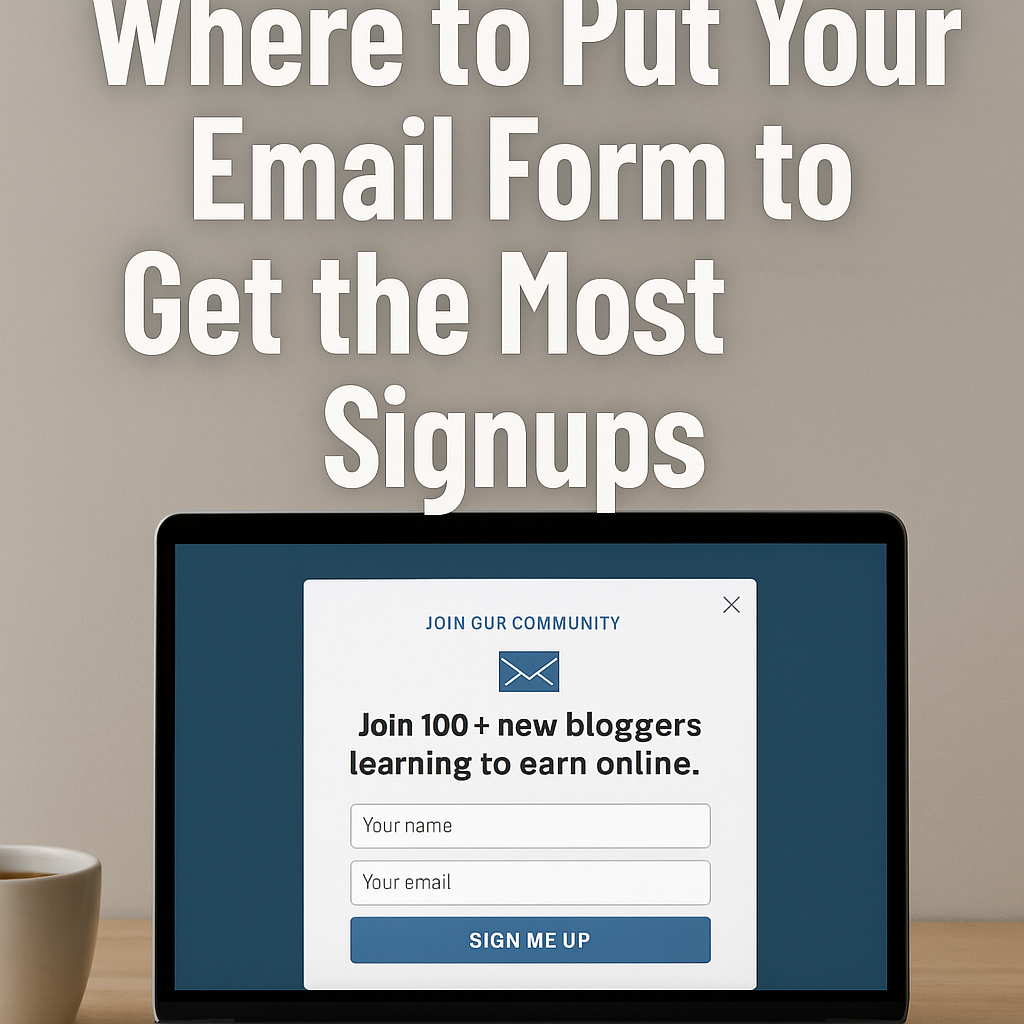What if I told you that writing just one blog post per week could change your entire financial future?
This isn’t some fantasy.
Thousands of people—digital nomads, stay-at-home parents, side hustlers—are building real online income streams with just one strategic post every week.
No ads. No products. No team. Just one blog and one commitment: publish weekly.
This guide will show you exactly how to build long-term wealth with minimal time, maximum leverage, and without burnout.
Part 1. Why One Blog Post a Week Works (When Done Right)
Most people think success comes from quantity: more posts, more social media, more hustle.
But true online wealth comes from compounding value over time.
Here’s why just one post a week works:
- Focus = Quality: You go deeper, create evergreen content, and solve real problems.
- Compounding SEO: Google rewards consistency. One great post a week = 52 powerful assets a year.
- AdSense + Affiliate Revenue: Each post becomes a money-generating asset.
- Easier to Manage: No burnout. You can schedule, optimize, and grow steadily.
Part 2. The 4 Rules of a Wealth-Generating Blog Post
To build wealth, not just traffic, each post must be:
1. Evergreen
Write content that stays relevant for 3–5 years.
Example: “How to Retire Early with Only a Smartphone” beats “Best Finance Apps of 2025”.
2. Globally Useful
Write for everyone — not just your local readers.
Example: “How to Budget When You’re Broke” works in the U.S., India, Brazil, Korea.
3. Monetizable
Insert AdSense blocks, affiliate links, digital products, or email list opt-ins.
4. Structured for SEO & Engagement
Use clear headings, answer common questions, and optimize metadata.
Part 3. Your Weekly Wealth Routine – Step by Step
Let’s build your Weekly Wealth Post system.
Monday – Topic Research & Keyword Planning
Use Google Trends, AnswerThePublic, or even Pinterest to find long-term questions people ask.
Check if the keyword has evergreen potential.
Tuesday – Outline and Structure
Use H2/H3 headers. Include real-life examples, numbers, and FAQs.
Plan the flow: Hook → Body → Monetization → Internal Links → CTA.
Wednesday & Thursday – Write, Edit, and Optimize
Focus on clarity. Make it easy for a 14-year-old to understand.
Add internal links to old posts and set up your SEO (Rank Math, Yoast, etc.).
Friday – Publish and Promote
Post it on your blog, then promote via:
- Pinterest (create vertical pin)
- Reddit (find relevant subreddits)
- Facebook Groups
- Medium (republish)
- Email newsletter (if available)
Part 4. The Hidden Power of One Post a Week
Think about this:
If every weekly post brings in just $2 per day, that’s:
- $14/week
- $728/year/post
- With 52 posts a year: $37,856 annually, passively
But here’s the magic:
Some posts will earn $0. Others $10/day. Some $50/day.
Your job is to keep publishing consistently—the numbers will surprise you.
Part 5. Examples of One-Post-a-Week Millionaires
These people didn’t hustle 24/7.
They focused on value and consistency.
- Michelle Schroeder-Gardner (Making Sense of Cents): One solid post a week led to $1M+ in annual income.
- Backlinko by Brian Dean: Deep SEO guides published monthly = massive traffic and revenue.
- Digital Nomad blogs: Many thrive on long-form, faceless, once-a-week content.
Part 6. Long-Term Strategy: Don’t Stop at 52
Once you hit 52 high-quality posts, here’s what to do next:
- Update old posts every 3–6 months
- Add internal links to increase dwell time
- Package 5–10 posts into a free eBook
- Use ChatGPT to turn posts into video scripts or podcasts
- Analyze traffic: double down on what works
Success doesn’t come from speed. It comes from smart repetition.
Final Words
You don’t need to publish every day.
You don’t need to be on every platform.
Just one deeply useful post a week,
written with intention, optimized for income,
and shared with the world.
That’s how digital wealth is built.
📌 Coming Up Next:
In our next post, “How to Use Pinterest to Drive Global Traffic to Your Blog,” we’ll reveal the exact strategies to attract thousands of readers using Pinterest—no dancing, no reels, just real, high-quality clicks that grow your audience.

